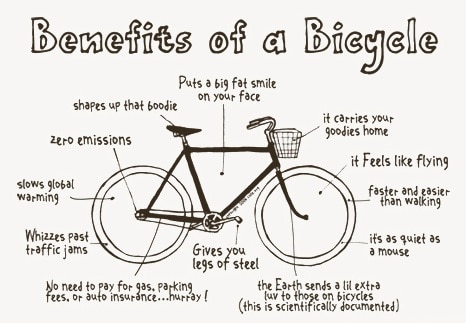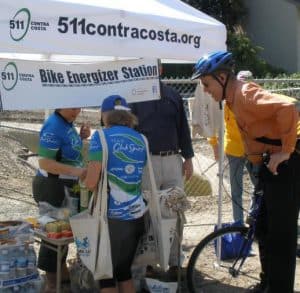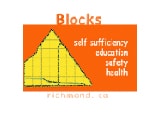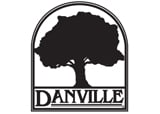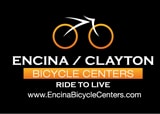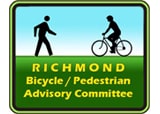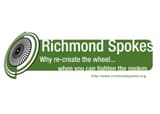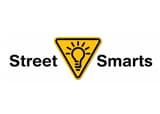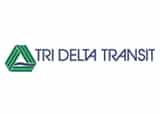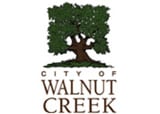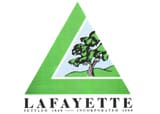Caldecott Tunnel workers see light, BART is one step closer to San Jose, local bike shops you should check out. Read our weekly news & events roundup for Contra Costa County, East Bay & Bay Area for transit, biking and transportation.
Tag: biking
This Week's Headlines in Transportation and Transit: Nov. 5-11, 2011
Our weekly news & events roundup for Contra Costa County, East Bay & Bay Area for transit, biking and transportation.
Our Halloween Photo Contest Winner!
Congratulations to Caitlin T., the winner of 511 Contra Costa’s Halloween Photo Contest for 2011! Caitlin will receive $25 to Peet’s Coffee & Tea.
Thanks to everyone for entering!

Keep your wheels where you leave them: Bike Locking 101
 Few things are more heartbreaking than coming back to find your bike is missing. It happens to the best of us, but there are extra precautions we can all take to protect our rides.
Few things are more heartbreaking than coming back to find your bike is missing. It happens to the best of us, but there are extra precautions we can all take to protect our rides.
1) Lock both the front wheel and the frame.
Do you have a quick release front wheel? Make sure any piece of your bike that could come off is secured to something. If you’ve ever seen an abandoned bike missing its front wheel, or just an abandoned front wheel – it used to belong to someone that should have locked their wheel and frame together.
2) Inspect the thing you’re locking onto.
Could someone lift the bike over the top of that post? Take a few seconds to think like a thief.
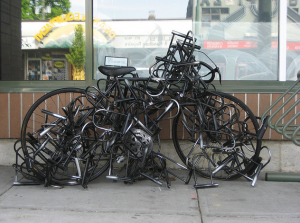
3) Make sure your lock is sturdy.
Avoid cable locks. Every year during undergraduate orientation, we would take the first broken cable lock of the year and use it to show parents what kind of lock *not* to buy their children. Invest in a sturdy U-shaped lock. If you have trouble getting both the frame and front wheel in your U-lock, get a bigger one.
4) Consider your seat.
It’s not as depressing as having your entire bike stolen, but a missing seat will still ruin your day. Tighten your seat and post as much as possible, and consider a seatpost lock.
Fortunately, your local transit agencies are working to keep your bike safe while you’re out and about. Check out these funky (but secure!) bike lids at the Santa Rosa Transit Center.

When you have your bike with you on BART, look for these Bike Spaces. These just make it easier to have a bike – you still need to keep an eye on it. It’s better not to lock your bike while riding the train, too.

Looking for a little fun? Check out this StreetFilm series: Hal and Kerri Grade Your Bike Lock. What would you give your bike locking prowess?
If all else fails and your bike is stolen while you’re at work, don’t forget about Contra Costa County’s Guaranteed Ride Home program!
Daylight Savings Time Ends November 6: Be safe in the dark
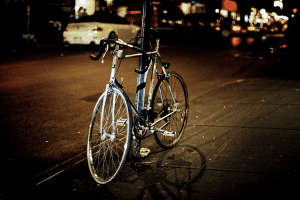 Daylight Savings Time ends for most of the United States at 1 AM on Sunday November 6.
Daylight Savings Time ends for most of the United States at 1 AM on Sunday November 6.
As we fall back the sun will set earlier in the evening. By by the end of November, the sun will set as early as 4:51 PM. This means a lot of people will be commuting home in the dark. Though fewer miles are driven at night relative to the day, more than half of all traffic deaths occur after dark.
Tips for Bicyclists:
- Use both front and rear bicycle lights. Bicycle lights are required by law, and are a very good idea.
- Be predictable. Don’t make sudden turns without signaling properly. Come to complete stops when required.
- Pedestrians, obey traffic laws, and don’t assume a driver will always see you. Make eye contact before crossing the street.
- Be visible. Do what you can to make yourself and your children more visible using reflective jackets and brightly colored coloring if you’ll be riding after 4:30 PM.
- Parents, suggest bright colors or reflective materials for children when coming home from school.
Be careful out there, and enjoy the extra hour of sleep.
1896 Bicycle Map of California
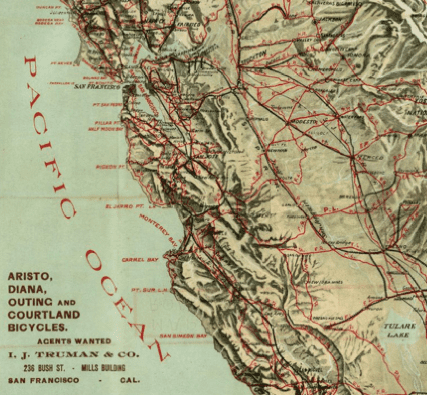
What a blast from the past!
Did you know Californian’s were already biking across the state as early as 1896? As we discuss in our History of Transportation – Bicycles, more efficient and precise manufacturing technologies allowed bicycles to be made cheaply, more safely, and they proliferated!
Bicycling was so common, it made people realize the impracticality of corsets. In 1896, Susan B. Anthony said that “the bicycle has done more for the emancipation of women than anything else in the world.”
See the full sized version here.
Bicyclist Rights and Responsibilities
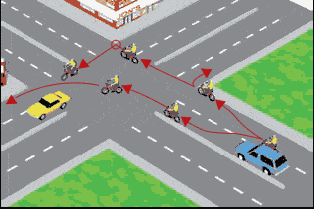 The only thing more fun than a bike ride is a safe bike ride. Follow these rules from the California Department of Motor Vehicles to make sure you get home safely.
The only thing more fun than a bike ride is a safe bike ride. Follow these rules from the California Department of Motor Vehicles to make sure you get home safely.
Bicyclists:
- Must obey all traffic signals and stop signs.
- Are lawfully permitted to ride on certain sections of roadway in rural areas where there is no alternate route.
- Must ride in the same direction as other traffic, not against it.
- Shall ride as near to the right curb or edge of the roadway as practical– not on the sidewalk.
- Are legally allowed to ride in the center of the lane when moving at the same speed as other traffic.
- May move left to pass a parked or moving vehicle, bicycle, animal, avoid debris, or other hazards.
- May choose to ride near the left curb or edge of a one-way street.
- Should ride single file on a busy or narrow street.
- Must make left and right turns in the same way that drivers do, using the same turn lanes. If the bicyclist is traveling straight ahead, he or she should use a through traffic lane rather than ride next to the curb and block traffic making right turns.
- Must signal all their intentions to motorists and bicyclists near them.
- Must wear a helmet if under the age of 18.
- Should carry identification.
- Shall not operate a bicycle on a roadway during darkness unless the bicycle is equipped with:
- A brake which will enable the operator to make one braked wheel stop on dry, level, clean pavement.
- During darkness bicyclists must have the following equipment:
- A front lamp emitting a white light visible from a distance of 300 feet.
- A rear red reflector visible from a distance of 500 feet.
- A white or yellow reflector on each pedal or on the bicyclist’s shoes or ankles visible from a distance of 200 feet.
Of course, being safe and visible only gets you so far. Safe bicycling requires safe drivers. Drivers should:
- Allow a four-second following distance. You will need this space to avoid hitting the bicyclist, if he or she brakes suddenly or falls off their bike. Bikes generally can stop faster than passenger vehicles.
- Allow the bicycle a full three feet. Although it is not illegal to share lanes with bicycle, it is unsafe.
- When you make a turn, check for bicyclists and gauge their speed before turning.
- Look carefully for bicyclists before opening doors next to moving traffic or before turning right.
- Remember that road conditions which are minor annoyances to you pose major hazards to bicyclists. Potholes, gravel, wet or slippery surfaces, pavement seams, railroad crossings, and grooved pavement can cause bicyclists to change speed or direction suddenly. If you are aware of the effect of these conditions and drive with care and attention, you can help reduce bicyclist injuries and fatalities.
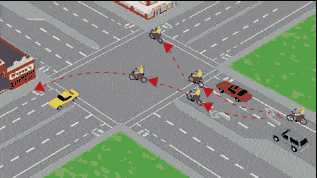 Remember: Bicycles are small, and they can easily disappear into a vehicle’s blind spots.
Remember: Bicycles are small, and they can easily disappear into a vehicle’s blind spots.
Drive cautiously, respect everyone’s right of way, and get home safely!
Some facts and figures on bikes
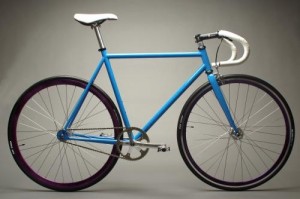 It may not look like much, but that two-wheeled contraption in your garage is a lean, green, health, economic and safety machine.
It may not look like much, but that two-wheeled contraption in your garage is a lean, green, health, economic and safety machine.
We rounded up some facts and stats from the Bikes Belong Coalition. Consider these talking points when you ask your employer to install a free bike locker.
1. Bicycling is for everyone
- Bicycling is the second most popular outdoor activity in the United States. (Outdoor Foundation, 2010)
- 47% of Americans say they would like more bike facilities in their communities. (National Highway Traffic Safety Administration, 2008)
- Most trips Americans make are short: 50% are less than 3 miles, 40% are less than 2 miles, and 28% are less than 1 mile. (US Department of Transportation, 2009)
2. Bicycling can help you live longer and better
- Adults who bike to work have better weight, blood pressure, and insulin levels. (Gordon-Larsen, P., et al., 2009)
- Women who bike 30 minutes a day have a lower risk of breast cancer. (Luoto, R., et al., 2000)
- Adolescents who bicycle are 48% less likely to be overweight as adults. (Menschik, D, et al., 2008)
3. Bicycling boosts the economy
- The U.S. bicycle industry sold $5.6 billion in bicycles and equipment in 2009. (National Bicycle Dealers Association, 2010)
- More than three times as many new bicycles (14.9 million) are sold in the U.S. each year than cars (4.6 million). (National Bicycle Dealers Association, 2010; Bureau of Transportation Statistics, 2010)
- Studies have shown that homes closer to bike paths are more valuable. (Various sources)
4. Bicycling is less expensive than driving a car
- The average American househould spends $7,179 per year on owning and driving their cars. (Bureau of Transportation Statistics, 2010)
- On a round-trip commute of 10 miles, bicyclists save around $10 daily. (Commute Solutions, 2011)
5. Bicycling reduces road congestion and air pollution
- Traffic congestion wastes nearly 3.9 billion gallons of gas per year in the U.S. (Texas Transportation Institute, 2010)
- For every 1 mile pedaled rather than driven, nearly 1 pound of CO² (0.88 lbs) is saved. (US Environmental Protection Agency, 2009)
6. Bicycling is safe, and together we can make it safer
- The health benefits of cycling outweigh the risks by a factor of 20 to one. (Hillman, M., 1992)
- There is safety in numbers: the more cyclists there are, the safer bicycling is. (Jacobsen, P., 2003)
Bikes in the Developing World
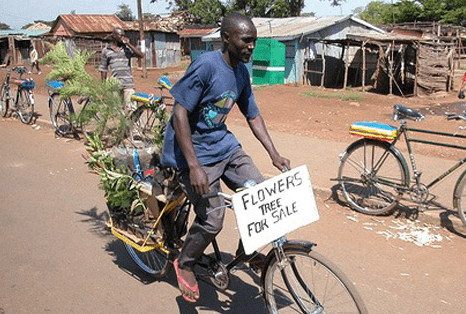 Biking is a great way to make your commute happier and healthier, but outside of the first world, bicycling replaces walking as a faster means of mobility for:
Biking is a great way to make your commute happier and healthier, but outside of the first world, bicycling replaces walking as a faster means of mobility for:
- Women, who typically spend more time than men walking through performing domestic duties like gathering food, water and firewood
- Children, who face long walks to school and arrive too tired to learn
- Healthcare workers, who often walk long distances to provide medication and counseling to people living with HIV/AIDS and malaria in their homes
- Unemployed people, who can start bike shops, delivery businesses, tourism ventures or spin off projects making trailers, racks and other add-ons
Bay Area-based World Bike sends bikes, parts, and skilled teachers to places like Cuba, Mexico, Rwanda, Senegal, and Thailand. This is the story of how the bicycle supports a Kenyan woman’s commerce.
When Lydia needs fertilizer, seed or grain, she buys only what she can carry on her head or, if she’s fortunate to have enough money to ride in a ‘matatu’ (a local bus), she fits more on her lap. When it’s time to sell milk produced by the family’s cow, Lydia takes whatever price is offered by the broker who visits the farm by truck. She has no other means to get the milk to the market, where it would fetch a fair price.
Maya Pedal in Guatemala uses bicycles to make “bicimaquinas”, that are used to de-grain and grind corn, pump water, de-pulp coffee, wash clothes, and more. The human-powered source of power helps families conduct jobs which enable them to send their children to school.
 Another group, Movement Bikes, is dedicated to designing and sourcing sturdy bikes that can survive the rugged conditions of places like rural Africa, but can be built and shipped for $10.
Another group, Movement Bikes, is dedicated to designing and sourcing sturdy bikes that can survive the rugged conditions of places like rural Africa, but can be built and shipped for $10.
There are several organizations doing this sort of work all over the world, and many of them are based within the Bay Area.
Benefits of a Bicycle
- Regular cyclists enjoy a fitness level equal to that of a person ten years younger. -National Forum for Coronary Heart Disease Foundation
- Cycling at least 3 hours a week cuts your risk of heart disease in HALF compared to those who do not cycle or perform other exercise, according to the British Heart association.
- Exposure to some air pollutants and toxic compounds can be 2 to 10 times higher inside cars than outside. A two year study in California found that concentrations of carbon monoxide, benzene, MTBE, and other harmful compounds are higher inside cars than at roadside monitoring stations. – ‘Divorce Your Car’, Katie Alvord
- Loose the extra pounds. A 15-minute bike ride to and from work or school five times a week burns off the equivalent of 11 pounds of fat in a year. – Leeds: Cycling and Health
- Multiple studies have found that moderate exercise, such as bicycling, has been found to reduce levels of depression and stress, improve mood and raise self-esteem.
- Bike commuting reduces the air pollutants that cause asthma and bronchitis.
- Every day in California cyclists prevent over 7 tons of inhalable particles from going into the air. Why not join the clean-up crew? – MPBTA, 2002
Meet three local cycling clubs
For many of us, a bicycle is a form of transportation. It reliably takes you to work, errands, and home again. Maybe you occasionally ride with a friend on the weekends around your neighborhood, but you ride a bike – you’re not a “cyclist”.
Maybe this fall is your chance to change your mind. These three local cycling clubs are made of people that bike for transportation like yourself, but they find fun, community, and friendship in riding as a group, too.
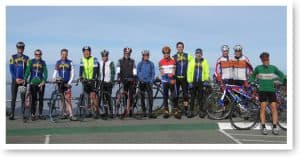 The Diablo Cyclists, Thanksgiving 2009
The Diablo Cyclists, Thanksgiving 2009
The Bay Area Velo Girls
Velo Girls was founded in March, 2002 by Lorri Lee Lown, a San Francisco Bay Area cyclist. The club is a place where women and girls can share their love for cycling in a safe, friendly, encouraging environment.
The club focuses on fun, recreational riding, with the opportunity to attend cycling skills and general fitness clinics to improve riding and overall fitness. There are scheduled rides for all level of riders from beginners, recreational riders, and racers. We number almost 250 members from throughout the greater Bay Area, including San Francisco, North Bay, East Bay, Silicon Valley, the coast, and the Peninsula. Our online community numbers over 1,000 women cyclists and is an incredible resource.
We offer rides and events every single day of year, including road rides for all levels, mountain bike trail rides, cyclocross training, and lots of fun!
Diablo Cyclists
Located 30 miles east of San Francisco in Walnut Creek, California, the Diablo Cyclists is a recreational road, touring and off road bicycle club. We are focused on providing cyclists of all levels an opportunity to ride, train and socialize with other bicycle enthusiasts. Our emphasis is more on the fitness, skill building, and social aspects of bicycling and less on racing. Please come out on one of our rides and get to know the friendly members of the Diablo Cyclists.
Check out their schedule of weekly Wednesday evening rides.
Delta Pedalers Club
The Delta Pedalers is a cycling club located in Eastern Contra Costa County. We are a bicycle touring club having bike rides throughout the week. We also support cycling advocacy and cycling events in the East County area. Come join us on one of our rides.
Join EBRPD on Sunday, August 21st for road cycling on the Moraga Trail

Join EBRPD Recreation staff for a fun weekend with spectacular views on Sunday, August 21st from 10 am – 2 pm. Bring a snack, water bottle, camera/binoculars, and sense of adventure and ride along scenic portions of bike trails, 10-15 miles in length.
Previous bicycling experience and good physical condition strongly recommended.
When
- Sunday, August 21, 2011 from 10:00 AM – 2:00 PM
- Note: cancelled in event of rain.
Where
- Meet at Olympic Blvd Staging (east) in Lafayette.
Description
- 11.9 miles round trip.
- No registration required.
- Helmets required, loaners available.
- Dress accordingly.
- May include sections of riding on sidewalks and/or street bike lanes.
More information/Contact
- (510) 544-2553
- EBParksOnline.org
- Event page
Give the Walnut Creek City Council your feedback on the new Bicycle Plan
 Walnut Creek creek has finished a draft of its first ever Bicycle Plan and takes it to City Council and a public hearing on August 2, 2011. If you live, work or ride in Walnut Creek, this is a great opportunity learn more about the City’s plans to become more bike-friendly. The Bicycle Plan incorporates new bike lanes and bikeways that were proposed in the General Plan, and provides specific recommendations to promote bicycling as a desirable alternative to driving. Specifically, the Bicycle Plan establishes goals, policies, implementation actions, and priorities for the development of much needed bicycle facilities throughout the city of Walnut Creek.
Walnut Creek creek has finished a draft of its first ever Bicycle Plan and takes it to City Council and a public hearing on August 2, 2011. If you live, work or ride in Walnut Creek, this is a great opportunity learn more about the City’s plans to become more bike-friendly. The Bicycle Plan incorporates new bike lanes and bikeways that were proposed in the General Plan, and provides specific recommendations to promote bicycling as a desirable alternative to driving. Specifically, the Bicycle Plan establishes goals, policies, implementation actions, and priorities for the development of much needed bicycle facilities throughout the city of Walnut Creek.
City Council is expected to consider the Bicycle Plan at a Public Hearing on Tuesday, August 2, 2011, at 7pm in the Walnut Creek City Council Chamber, 1666 North Main Street. Walnut Creek, this is your chance to help your City Council understand how this plan can help transportation in your city.
Read up on the plan before the big meeting:
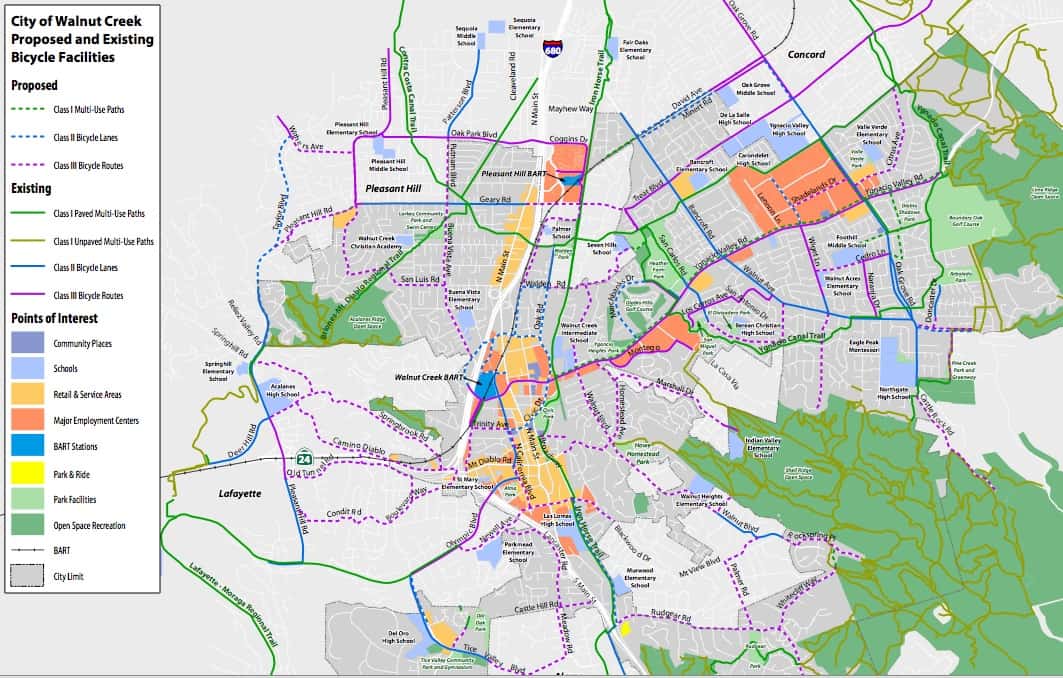
Ask 511CC!
 Here on 511CC, we’ve assembled the finest collection of bike mappers, smog alerts, driving tools, and other resources to get you out from behind the wheel and enjoying beautiful Contra Costa County.
Here on 511CC, we’ve assembled the finest collection of bike mappers, smog alerts, driving tools, and other resources to get you out from behind the wheel and enjoying beautiful Contra Costa County.
Our goal is to have all of the answers, but sometimes, we need you to ask the questions. So ask us!
Today is 511CC’s first weekly Transportation Q&A Day. We invite you, our readers – the people out there walking, riding, driving, and living in Contra Costa County – to rake your brain for those transportation questions that nag you and send them to us.
- How to use the system – routes, stops, stations, and fares
- Why our transportation works the way it does
- You name it!
If we can’t answer your question immediately, we’ll do a bit of sleuthing to find the answer. We’ll post the results back here on the 511CC blog for everyone to see.
Leave your question in the comments, Facebook, or tweet it at us. What Qs do you want to A?
Town of Danville kicks off Share Our Streets
 The Town of Danville is kicking off the first day of summer – a season synonymous with outdoor recreation – with the new “Share Our Streets” traffic safety campaign.
The Town of Danville is kicking off the first day of summer – a season synonymous with outdoor recreation – with the new “Share Our Streets” traffic safety campaign.
“Share Our Streets”, a joint effort by the Town’s Transportation and Police Departments, is a new summer-long program targeting the three main groups using area roadways: drivers, bicyclists and pedestrians. The campaign, designed to promote safety among those groups, was developed in an effort to address concerns raised by local residents about the conflicts between the three groups. The “Share Our Streets” logo, featuring a biker, walker and driver, will serve as a reminder to everyone that safety, courtesy and caution is a shared responsibility.
Implementation of “Share Our Streets” will be a three-step operation that includes education, warning and enforcement periods. During the first phase (June 21 through July 18), the focus is on getting out the message. Police and citizen volunteers will be passing out informational materials to residents in Town.
In the second phase (July 21 through August 15), law enforcement officers will have the option of issuing a warning ticket in lieu of a formal citation for minor traffic infractions. During the final four weeks of the campaign, Danville Police will be strictly enforcing traffic laws for all three groups.
“Share Our Streets is not about issuing citations,” stated Danville Police Chief Steve Simpkins. “Our goal is to convey a positive message through education by first reminding our users to be courteous and cautious on the road.”
For more information on “Share Our Streets”, contact Sgt. Brad Harms at (925) 314-3722 or Bharms@danville.ca.gov or Transportation Program Coordinator Nat Rojanasathira at (925) 314-3382 or nrojanasathira@danville.ca.gov.
Don't cause a bicycling statistic, either
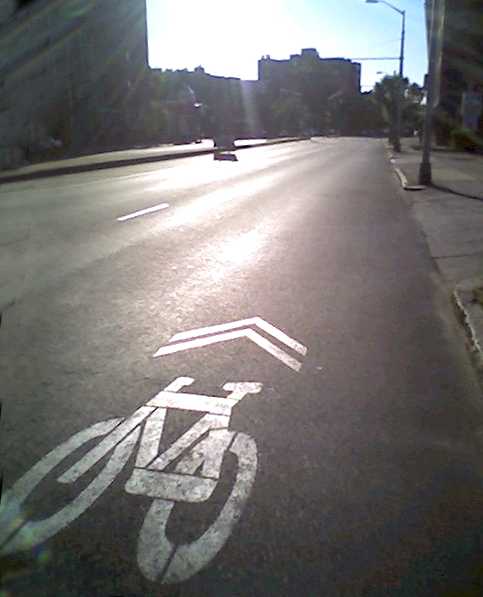 The only thing worse than being hit by a car on a bicycle is hitting someone else with your car while they’re on a bicycle.
The only thing worse than being hit by a car on a bicycle is hitting someone else with your car while they’re on a bicycle.
For starters, meet the “sharrow”. A sharrow, or “shared arrow” is shown on the right. This design indicates that bicycles and cars should share full use of the lane. If you’re behind a slow moving bicycle, treat it like any other slow moving vehicle. If you’re on your bike, look for reasonable and safe opportunities to let cars pass you.
Treat a bike lane like any other lane.
As the Bay Citizen’s data shows, bicyclists are everywhere – not just on streets with bike lanes and signs.
The Californi DMV offers these words of advice (actually, requirement) to help drivers reduce their risk of injuring others.
- At intersections without “STOP” or “YIELD” signs, slow down and be ready to stop. Yield to traffic and pedestrians already in the intersection or just entering the intersection. Also, yield to the vehicle or bicycle which arrives first, or to the vehicle or bicycle on your right if it reaches the intersection at the same time as you.
- Do not obstruct bicycle traffic by reducing the width required for safe bicycle passage, typically three to four feet.
- When you are making a right turn and are within 200 feet of the corner or other driveway entrance, you must enter the bicycle lane only after ensuring there is no bicycle traffic,and then make the turn. Do not drive in the bicycle lane at any other time.
- You may park in a bicycle lane if your vehicle does not block a bicyclist and/or there is not a “No Parking” sign posted.
- When passing a bicyclist in the travel lane ensure enough width for the bicyclist, typically 3 feet. Do not squeeze a bicyclist off the road.
- Bicyclists may occupy the center of the lane when conditions such as a narrow lane or road hazard make it unsafe to ride in a position that may provide room for a vehicle to pass.
- With any slow-moving vehicle, drivers should follow at a safe distance. When it is safe the bicyclists should move to a position that allows vehicles to pass.
- Allow sufficient clearance, and ample room for movement and unexpected road conditions.
- Always look carefully for bicyclists before opening doors next to moving traffic or before turning.
- Allow bicyclists enough room to avoid colliding with vehicle doors that are opened into traffic.
- Do not try to pass a bicyclist just before making a turn. Merge safely where it is allowed, then turn.
- Make a visual check for bicyclists when changing lanes or entering traffic. Bicycles are small and may be hidden in a vehicle’s blind spot.
- Be careful when approaching or passing a bicyclist on a two lane highway or freeway.
Do you have anything to add?
Don't become a bicycling statistic
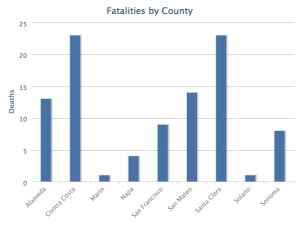 For all Contra Costa County’s progress to make bicycling friendlier, safer, and more fun, the Bay Citizen reminds us that a lot of work is left to be done.
For all Contra Costa County’s progress to make bicycling friendlier, safer, and more fun, the Bay Citizen reminds us that a lot of work is left to be done.
From 2005 through 2009, 23 cyclists died in Contra Costa County… The Tracker reveals that some suburban areas like Contra Costa County are actually more dangerous for cyclists than crowded urban areas like San Francisco.
Meanwhile, in addition to the known health risks of driven commutes, new research suggests the stress of driving long distances every day can lead to stress and even divorce.
How can you keep your healthy, active commute without becoming a dour or deadly statistic? We could all stand to review the rules of the road. From the California Department of Motor Vehicles:
1. Maintain Control of Your Bicycle
There are many things you can do to control your bicycle, even in an emergency. First, ensure your bicycle is the right size and properly adjusted to fit you. A properly fitted bicycle is easier to control, more comfortable, and causes less fatigue. A bicycle shop can help you choose the correct size bicycle. Ensure your bicycle is in good working order by inspecting it regularly.
2. Protect Yourself
Even a simple fall can cause a life threatening head injury. The brain is fragile and often does not heal the way that broken bones can. The damage can stay with you for life. Helmets provide protection. By law, bicycle riders under 18 years of age must wear a bicycle helmet while riding on a public road. Wear your helmet correctly!
3. Be Visible and Alert
Even if you obey all traffic laws, there is always a risk of being hit by a motorist who is not obeying the laws, or who simply does not see you. Ride carefully—Vehicles waiting at stop signs, in driveways, or parking spaces may suddenly pull out in front of you. Watch for vehicles that have just passed you and may turn right, as well as vehicles across the street that may turn left in front of you. Be prepared to stop or take evasive action. Signal before making turns or changing lanes to warn traffic around you. To signal a left turn, look behind you, over your left shoulder, and then extend your left arm out. To signal a right turn, hold your left arm up with your elbow bent (you may also hold your right arm straight and point to the right). You do not have to keep your arm extended while completing the maneuver—Always have at least one hand on the handlebars to maintain control. To signal that you are slowing or stopping, extend your left arm down.
Using lights and reflectors at night is the law. Increase your visibility by wearing light or bright colored clothes, such as yellow or lime green. Red appears black in fading light and is not a good choice for riding in the evening. Mirrors provide opportunities for increased awareness of your surroundings, but use mirrors only as an aid. Always look over your shoulder to make sure the lane is clear before turning or changing lanes. Make sure your brakes are in good working order.
4. Ride With Traffic
Ride in the same direction as the traffic. This will make you more visible to drivers entering roads or changing lanes because they will know where to look for possible conflicts. On a one-way street, you may ride on the left as long as you are riding with traffic.
How Far to the Right?: Ride on the right, but not so far that you might hit the curb. You could lose your balance and fall into traffic. Do not ride too far to the right:
- When avoiding parked vehicles or road hazards.
- When a traffic lane is too narrow for a bicycle and vehicle to travel safely side by side.
- When making a left turn so that vehicles going straight do not collide into you.
- To avoid conflicts with right-turning vehicles.
When to Take the Traffic Lane: If there is no shoulder or bicycle lane and the traffic lane is narrow, ride closer to the center of the lane. This will prevent motorists from passing you when there is not enough room. You should also use the traffic lane when you are traveling at the same speed as the traffic around you. This will keep you out of motorists’ blind spots and reduce conflicts with right-turning traffic.
Obey Traffic Signs and Signals: Bicyclists must obey STOP signs and red signal lights. It’s a good idea to stop for yellow lights too—rushing through a yellow light may not leave you enough time to make it across the intersection before the light changes.
Left Turns: There are two proper methods for making a left turn on a bicycle:
- Using Traffic Lanes: As you approach the intersection, look over your left shoulder for traffic. If clear, signal your turn and move over to the left side of the lane, or into the left or center turn lane. Position yourself so that vehicles going straight cannot pass you on your left while you are making your left hand turn. Yield to oncoming traffic before turning. If you are riding in a bicycle lane, or on a multi-lane road, you need to look and signal each time you change lanes. Never make a left turn from the right side of the road, even if you’re in a bicycle lane.
- Using Crosswalks: Approach the intersection staying on the right. Stop and either cross as a pedestrian in the crosswalk, or make a 90 degree left turn and proceed as if you were coming from the right. If there is a signal light, wait for the green or WALK signal before crossing. Yield to pedestrians in the crosswalk.
One more from 511CC: Pick your route carefully.
Not all roads were created equal. Busy, direct streets tend to have more traffic, and everyone must fight for space. Quieter neighborhood streets don’t have as much traffic, but a driver may not expect to see you on your bike. Wide streets encourage faster driving, but narrow streets make it more difficult to share lanes.
Carefully pick your route to ensure you’re biking on streets where you feel safe. 511CC’s Bike Mapper can help you pick a route with the right steepness and official infrastructure (such as signs, painted bike arrows or bike lanes).
What makes you feel safest on your bike?
Get a free bike locker at your workplace!
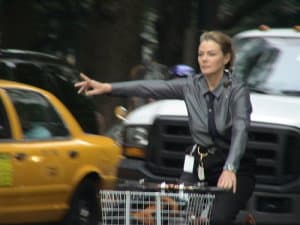 Is your employer or business a bike-friendly business?
Is your employer or business a bike-friendly business?
Long, driven commutes are connected to higher divorce rates, as well as high stress and high costs. Living closer to your destination and traveling by bike is good for your wallet, your health, and your environment. Encouraging your co-workers and employees to make the switch to bike commuting, even once a week, can keep your office happier, healthier, and more productive.
What can you do in…
30 seconds?
Request a free bike locker at your workplace! Give a bike commuter a safe place to store their bike during work hours.
30 minutes?
Start a bike commuting club. You know that person that would bike but needs a little bit more motivation (unless it’s you). Organize a group ride once a week. Meet in a specific location at a set time, and ride to work together. You’ll arrive at work energized, and get to know your colleagues along the way.
As long as you have your bike at work, consider adding something special to the routine once a month. Do people want to bike to a lunch picnic or happy hour?
3 hours?
511 Contra Costa offers no-cost training seminars for both employers and employees that want to encourage bike commuting to their workplace. Are you willing to host a free workshop on no-cost green commute options for your employees? Give us a call us at (925) 969-0841 x204.
Topics include:
- Pre-tax benefits for commute expenses, such as TranBen, TransitChek (Transit Center), Commuter Check, WageWorks, Benefit Resource Inc. (eTrac), Clipper Direct
- Teleworking or compressed work week program development mini-grants
- Obtaining Green Business Certification
- Establishing company-sponsored commuter rewards programs
- Administering employee transportation surveys
These seminars are for more than bike commuters. Ask how transit riders and vanpoolers can set aside up to $230 of pre-tax income per month, saving up to $1,000 a year.
Are you already a bike-friendly business?
Let the world know with a designation from the League of American Bicyclists! Submit an application (or browse it for more ideas) today!
Want more local recognition? Start getting ready now for the East Bay Bicycle Coalition’s 2012 Bike-Friendly Business Awards.
Share your story.
Is your company an inspiration to bike commuters, or a cautionary tale? What would you like to see employers do to make bicycling to work easier? Share you experiences in the comments!
AC Transit and Bikes
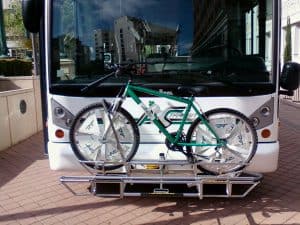 We posted BART’s bike rules on Monday. With 105 bus lines, including 27 transbay lines to San Francisco and the Peninsula, AC Transit can really extend your range. Do you know AC Transit’s rules for bicycles?
We posted BART’s bike rules on Monday. With 105 bus lines, including 27 transbay lines to San Francisco and the Peninsula, AC Transit can really extend your range. Do you know AC Transit’s rules for bicycles?
Bikes are allowed on AC Transit buses between midnight and 5:30 am.
AC Transit’s bike racks can only accomodate two-wheeled bicycles with a wheelbase up to 44 inches and a wheel size of at least 16 inches.
AC Transit’s phone number for lost bikes is 510-891-4706. All found bicycles are brought to 1600 Franklin Street and kept for 30 days.
But those racks!
Does the thought of leaving your unsecured bike in front of a 10 ton bus make you cringe? Know the steps – it’s easy!
Loading your Bicycle
- When the bus approaches, stay on the sidewalk with your bicycle away from the curb.
- Be ready to load your bike by removing any items, such as bags or pumps, that may fall off or interfere with another bike.
- First allow other cyclists to remove their bikes.
- Signal to the bus driver that you want to load your bike. Make sure the driver sees you before stepping in front of the bus.
- Load from the curb side of the bus – do not step into traffic.
- Squeeze and pull up on the bike rack handle to release the folded rack. Lower the rack until it clicks into place.
- If there is no other bike on the rack, use the inside slot with your front wheel facing the curb.
- Lift your bike onto the rack, fitting the wheels into the slots labeled “front” and “rear.” Two bicycles will face in opposite directions on the rack.
- Pull out and raise the support arm over the top of the front tire, positioning it as high u pon the tire as possible. Do not lock your bike to the rack.
- Get on board, pay your fare, and sit near the front so you can keep an eye on your bike. Always yield front seats to person with disabilities.
Unloading your bike
- Signal for your stop about a block ahead.
- Tell the driver you will be unloading your bike and exit through the front door.
- Raise the support arm up and off the bike’s front tire.
- Lift and remove the bike from the rack.
- If no other bike is on the rack, fold and secure the rack into the upright position.
- Return to the curb with your bike as quickly as possible so the bus can proceed.
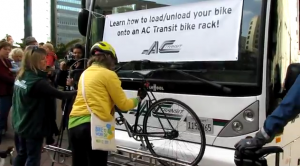 Ready to bring your bike on the bus? AC Transit hosted a competition on Bike to Work Day to find the person who could load and unload their bicycle the fastest. The record – 9 seconds. It was harder than it looked.
Ready to bring your bike on the bus? AC Transit hosted a competition on Bike to Work Day to find the person who could load and unload their bicycle the fastest. The record – 9 seconds. It was harder than it looked.
Have you taken your bike on the bus? Share your story.
BART, bikes, and risking $250 fines
The SF Examiner ran a piece last week about people risking the $250 fee to bring their bicycles on BART during rush hour, justifying their admitted rule-breaking by pointing out that BART rarely issues tickets.
Winford Chew, a South San Francisco resident, said he takes his bike on BART every weekday to The City.
“I’ve gotten yelled at a couple of times by the station agents,” Chew said. “But I’ve never been fined or anything. I know that bikes are banned, but BART is the most convenient way for me to travel, and until I get in trouble, I’m going to keep bringing my bike onboard.”
So what are the rules?
For one, know where to look on the schedule to see if bikes are allowed on your train.

- Regardless of any other rule, bikes are never allowed on crowded cars. Use your good judgment and only board cars that can comfortably accommodate you and your bicycle. Hold your bike while on the trains.
- Bikes are allowed in any car but the first car of a train.
- Bicyclists must use elevator or stairs, not escalators, and always walk bikes.
- Bicyclists must yield priority seating to seniors and people with disabilities, yield to other passengers, and not block aisles or doors or soil seats.
- In case of an evacuation, leave your bike on the train and do not let it block aisles or doors.
- Bicyclists under 14 years old must be accompanied by an adult.
- Gas powered vehicles are never permitted.
- Bikes must be parked in racks and lockers. Call (510) 464-7133 for locker availability. Bikes parked against poles, fences or railings will be removed.
- Commute hours are roughly 7:05 to 8:50 am and 4:25 to 6:45 pm.
- During morning commute hours, bikes are allowed in the Embarcadero Station only for trips to the East Bay (as indicated by the Fares and Schedules brochure).
- During evening commute hours, bicyclists traveling from the East Bay must exit at the Embarcadero Station (as indicated by the Fares and Schedules brochure).
- Bikes cannot enter or exit 12th and 19th Street Oakland Stations on weekdays between 6:56 – 8:50 am and 4:35 – 6:40 pm. (as indicated by the Fares and Schedules brochure).
- Folded bikes are allowed on the trains at all times. During commute hours, folding bikes must be folded before entering the paid area at the Embarcadero, Montgomery, Powell, and Civic Center San Francisco Stations, and the 12th and 19th Street Oakland Stations. At all other stations, they may be folded on the platform, but must be folded before boarding a train.
Need to get your bike to San Francisco during rush hour? Options are limited.
You could try arriving outside the regular commuter hours.
You could take the $1 bike shuttle at MacArthur. Note: it fills up quickly.
You could weigh in BART’s Seats Survey and ask that the new train cars come with bike cars.
Do you risk the fine?
Bike to Work Day: Thursday May 12, 2011
17th Annual Bike to Work Day – May 12, 2011.

Come help celebrate National Bike Month and California Bike Commute Week in May with Bike to Work Day. Bike to Work Day is a promotional event to encourage non-bike riders to try commuting by bicycle. Bike to Work Day in the San Francisco Bay Area is primarily funded by the Metropolitan Transportation Commission with the help of financial donations from event sponsors and volunteers.
There were over 100 energizer stations throughout the bay region where cyclists can stop by for refreshments and promotional items.511 Contra Costa has supported cyclists and Energizer Station hosts throughout Contra Costa County since 2001 using Bay Area Air Quality Management District funds and the Contra Costa Transportation Authority’s half-cent sales tax for transportation funds.
Want to participate in BTWD, but not sure what to do? Check out our blog post, Bike to Work Day: Are you ready?
Contra Costa Bike Commuter of the Year
Brentwood’s Al Lim was the 2011 Contra Costa County Bike Commuter of the Year. Read how Al’s determination, humility and dedication to bicycling inspires his friends, family and coworkers. More >>
Contra Costa Team Bike Challenge Winners
Congratulations to EBMUD for winning the top Contra Costa 2011 Team Bike Challenge for BTWD.
Hydrologic Cyclers
276 pts / 2,083.4 miles
East Bay Municipal Utility District
Contra Costa
Stations listed in alpha order by city
- Mokelumne Trail at Sutter Delta Hospital, 6- 8:30am and 4-6 pm, City of Antioch
- Corner of Deer Valley Road and Wellness Way, 6:00am-9:30am and 1-3pm, Kaiser Antioch Medical Center
- Somersville/Buchanan, 7-9am, Tri Delta Transit
Brentwood
- Sand Creek Road / Shady Willow Lane, 7-9am, Brentwood REI
- City Park, 2nd and Oak Street, 7-9am, Delta Pedalers
- Corner of Rosebrook Terrace and Central Blvd. 7:45-9am, Ron Nunn Elementary School
Concord
- Concord BART, 6-9am, Bank of America
Danville
- Iron Horse Trail behind Lunardi’s , 6:30-9am, Town of Danville and the San Ramon Valley Street Smarts Program
- Iron Horse Trail at Paraiso Drive/ John Baldwin School, 7-9am, Street Smarts and Danville Police Department
El Cerrito
- Bike Lockers at the Ohlone Greenway (across from the El Cerrito Plaza BART), 7-9am, City of El Cerrito
El Sobrante
- 3826 San Pablo Dam Road (both sides of the street), 7-9am, and 4-6pm The Pedaler Bike Shop
Lafayette
- Lafayette Plaza Park (corner of Mt. Diablo Blvd. and Moraga Rd. ), 6-8:30am City of Lafayette-Bike/Pedestrian Advisory Committee
- Lafayette Plaza Park, 3-5pm, Lafayette Chamber of Commerce
- Lafayette BART (outside Lafayette BART Kiosk), 7-9am, Hank and Frank Bicycles
Martinez
- Capitol Corridor Station, 5:15am-9:30am, Richard Anderson
- 4797 Imhoff Place, Central Contra Costa Sanitary District
Orinda
- Moraga Way/Brookwood Rd (Beverages and More parking lot), 6-8am, City of Orinda
Pittsburg
- DeAnza Trail at Railroad, 6:30-8:30am, City of Pittsburg
- LMC Campus – Quad Area, 9am-1pm, Los Medanos College
Pleasant Hill
- Pleasant Hill Contra Costa Center BART 6:30-9am REI, Concord
- Iron Horse Trail just north of Pleasant Hill BART Station, 4-6:30pm Genworth
- Contra Costa Canal Trail / Golf Club Road, 4:30pm-6:30pm, DVC
- Pleasant Hill/Contra Costa Centre BART station (near paid area), 4-6:30pm, Contra Costa Transportation Authority
Richmond
- Richmond Bay Trail at Marina Bay Park, SunPower and Richmond Spokes, 7-9am
- 914 Marina Way South at Main Entrance, 7-9am, Kaiser Permanente Regional Laboratory
- Richmond BART Station near bike lockers in upper courtyard, 7-9am, Building Blocks for Kids/Major Taylor
- The Greenway, Ohio Ave and 6th Street, 7-9am, Groundwork Richmond
- Richmond Home Depot at Greenway (Connector between Ohlone Trail and Richmond Greenway), 7 -9am, Richmond Bicycle Pedestrian Advisory Committee
San Pablo
- 13052 San Pablo Ave, 7-10am, CARS (Complete Auto Repair Service)
San Ramon
- Iron Horse Trail / Crow Canyon Rd 6-9am, City of San Ramon and PG&E
- Iron Horse Trail / Bollinger Canyon,6:00 am – 6:00pm, Bishop Ranch Transportation Center
- 100 Sunset Dr., 8am-6pm, Whole Foods Market San Ramon
Walnut Creek
- South Broadway / Newell, 6:30-9am, Whole Foods Market
- Iron Horse Trail / Canal Trail Crossing, 6:30-9am, County Connection and 511 Contra Costa/Renaissance ClubSport 4-7pm
- Ygnacio Valley Rd/N. California corner (BART), 6-9am, City of Walnut Creek
- 2901 Ygnacio Valley Rd / Breeze Way, 6:30-9am, Encina Bike Shop
- North Wiget on the Canal Trail, 7:30-9:30am, Renaissance ClubSport
- 1931 First Ave, Lindsay Wildlife Museum, 9am to noon, Lindsay Wildlife Museum
- Walnut Creek BART station, 4-6pm, Mikes Bikes of Walnut Creek
- Canal Trail off North Wiget, 4-6pm, Kaiser Permanente
- 320 Lennon Lane (Kaiser), 12-2pm, Kaiser Permanente
Energizer Stations and Bike Maps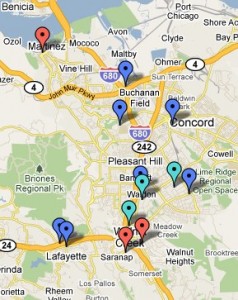
The Bike to Work Day website has google maps of energizer stations all over the bay area. Click here for a map of Contra Costa County energizer stations. A list of all energizer station region maps is available here.
Need help with your route? Check out our selection of free paper and on-line bike maps.
Bike to Work Day Materials
Download the BTWD flyer, employer tool-kit information, and Team Bike Challenge information.
Bike to Work Day Photos
The 511CC flickr stream is chock full of Bike to Work Day photos from years past. Check out the Bike to Work Day photo archives here. We are also compiling an archive of older Bike to Work Day photos, which you can check out here.
Submit your photos and/or videos of Bike to Work Day to enter for a chance to win $25 Peet’s Coffee & Tea! Submissions must be sent by May 18, 2011 5pm PST to be eligible for the prize drawing. Send your photos and/or videos via Twitter or email them to submissions@511contracosta.org.
BTWD in Contra Costa Made Possible by Our Local Partners
Thanks to the following public agencies and companies who are sponsoring Energizer Stations.
Happy Bike to Work Day! (2011)
Welcome back! How was it?
Want to share your pictures and video for a chance to win $25 at Peet’s Coffee & Tea?
Send your photos and/or videos via Twitter or email them to submissions@511contracosta.org by 5 pm on Wednesday, May 18 and you could win!
Check out last year’s pictures below!
Created with Admarket’s flickrSLiDR.
Al Lim: 2011 Contra Costa Bike Commuter of the Year!
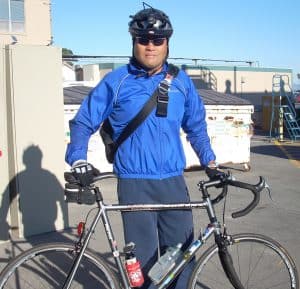 511 Contra Costa congratulates Al Lim, 2011’s Bike Commuter of the Year!
511 Contra Costa congratulates Al Lim, 2011’s Bike Commuter of the Year!
What does it take to be a Bike Commuter of the Year?
In Al’s case, it requires a lot of determination and being an inspiration to others.
“Our man Al commutes on his bikes, including ?fixed gears, in all weather conditions and against many challenges – including darkness, strong head winds and several difficult intersections,” says Michael Thomas, Al’s cycling companion and the person who nominated Al for Contra Costa Bike Commuter of the Year. “Humility is true about everything Al does and because of this he is an inspiration to all who know him,” Mr. Thomas adds.
Every day, Al’s commute takes him from his home in Brentwood on the far east side of the State Route 4 Bypass, eastward along the Delta De Anza Trail, to the west side of Bay Point where Al works as the General Manager of Criterion Catalysts & Technologies, making products that allow petroleum products and fuels to be cleaner. An employee at the plant, who now regularly bicycles to work, had told Al that at his previous employer, bicycle commuting would not have been considered acceptable. But since the boss was now doing it every day, it legitimized bicycle commuting at Criterion. “When our staff saw that their boss bicycled to work, it showed them that it was OK to do,” says Al. “When I started work at Criterion, I was the only one who biked. Now, several of our staff have regularly bicycled to work, from homes in Oakley, San Ramon and Oakland.” Al takes a lot of pride in the fact that Eastern Contra Costa is more bikeable every year. When friends from out of state visit, Al always seems to fit in a bike ride and he delights when his out of town guests marvel at the Bay Area’s great weather and the many bike lanes and bike trails in the East Bay.
Al makes a point to ride to work dressed in normal attire, because “that’s what bicyclists do” but Al is also inspired by how colleagues at Criterion’s European affiliates view and utilize bicycles. They think of their bikes quite differently. “Here, bicycling is a pastime and a bike is a possession that you take care of. In Europe, everyone rides a bike to get where they are going and it would be a joke to wash your bike. It would be like washing your hammer-a bike is tool.” And there are more bike facilities in Europe on which to commute to work. On that note, Al is looking forward to the re-connection of the Mokelumne Trail at the State Route 4 Bypass, which severed the bike trail several years ago. “Before the bypass, it was much better and safer to bicycle down Lone Tree Way,” Al recalls. “Now, Lone Tree is a dangerous street. The re-connected bike trail would open up the shopping centers to the residential neighborhoods for short trips to places like Trader Joe’s, and get more people biking to work.”
Al and his wife Mai have three kids, all of whom bicycle. His teenage sons, Zack and Max run track & field and sometimes cross train on their bikes, while his 12-year old daughter Sydney rides the most. “My cycling sets a good example to my kids for their good health,” emphasizes Al.
Al also runs an orphaned bike garage, accepting all bikes that his friends have abandoned over the years. He fixes many up and has given several away to friends in need of a bike. Al is also a regular guitar entertainer at the Delta Pedalers annual holiday party. Because of his commitment to bicycling and his inspiration to co-workers, friends and family, Al Lim is our Bike Commuter of the Year in Contra Costa County.
Read about this year’s other winners.
One More Day to Bike to Work Day 2011!
 Bike to Work Day is tomorrow! Are your tires pumped? Is your seat at the right height? Have you picked a route past one of Contra Costa County’s energizer stations?
Bike to Work Day is tomorrow! Are your tires pumped? Is your seat at the right height? Have you picked a route past one of Contra Costa County’s energizer stations?
Why not?
Last week, volunteers stuffed all kinds of donated freebies (gym passes, Clif Bars, Amtrak coupons, to name a few) into hundreds and hundreds of canvas tote bags. The only way to get one is to stop at an energizer station. Don’t miss out!
Antioch
Brentwood
Danville
El Cerrito
El Sobrante
Lafayette
Martinez
Orinda
Pittsburg
Pleasant Hill
Richmond
San Pablo
San Ramon
Walnut Creek
